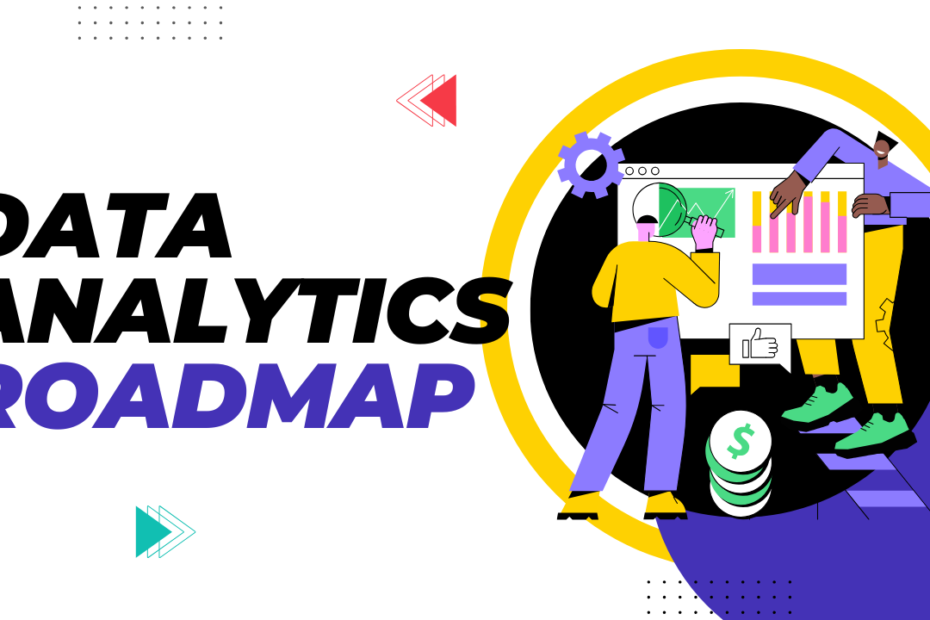
Hey there! In today’s world, where everything is online, knowing how to work with data is a big deal. Data analytics is all about just figuring out what all those numbers and facts mean. Whether you’re new to this or already know a bit, this guide(article) is like a friendly map to help you become a data analyst. This article has all the steps, tools, and tips that you’ll need to become a pro Data Analyst.
What’s Data Analytics All About?
Think of data analytics like being a detective or a cop. You look at some of the info like numbers or lists and figure out what’s going on. Companies use this to make smart choices, fix stuff, know different insights and do better. A data analyst grabs the information, cleans it up (like organizing a messy desk), and uses some math to spot cool things, different patterns and insights present within the data.
Why Be a Data Analyst?
Here’s why it’s awesome:
- Jobs Everywhere: All kinds of businesses—like stores, hospitals, or tech companies—need data people.
- Nice Pay: You could make $65,000 to $120,000 a year, depending on where you are and how long you’ve been doing it (according to Glassdoor).
- Cool and multinational Companies: Imagine working at places like Google or Netflix.
- Work from Anywhere: Lots of these jobs let you stay home.
- Grow Big: The more you learn, the more you can move up.
- Growing demand of data analysts.
It’s a fun job that’s only getting more popular!
One gets confused that how and where to start from in order to become a successful Data Analyst. So to help them some of the key steps that is to be followes in order to become a good Data Analyst are described below:
Step 1: Get the Basics Down
Before you play with advanced and fancy tools, start with simple one. Here’s what to learn:
I. What Data Looks Like: Some is neat (like a list), some is wild (like random notes), and some is in-between.
II. Gathering and Fixing: You’ll collect information and datasets and tidy it up like removing unwanted parts.
III. Easy Math: Learn stuff like averages, middle numbers, or how spread out things are also known as statistical concepts.
IV. Making It Visual: Turn numbers into pictures, like charts, so it’s easy to get.
Free Stuff to Check Out:
- Harvard’s online data course : cs50.harvard.edu/x/
- Khan Academy’s math lessons : khanacademy.org/math/statistics-probability
- Google’s data certificate : coursera.org/professional-certificates/google-data-analytics
These are like free buddies to help you start!
Step 2: Get Good at Excel & Google Sheets
Excel’s like your trusty sidekick—it’s everywhere! You should know:
I. Cleaning Up: Fix mistakes or toss out bad bits.
II. Pivot Tables: Sum up big info quick.
III. VLOOKUP & HLOOKUP: Hunt down stuff in your sheet.
IV. Pretty Looks: Add colors or rules to make it pop.
V. Charts: Make your numbers look cool by visually representing.
Google Sheets is free and works the same way, so try it too.
Free Help:
- Microsoft’s Excel lessons (microsoft.com/en-us/training/excel)
- YouTube’s Excel for newbies (youtube.com/watch?v=Vl0H-qTclOg)
Practice a bit, and you’ll feel like a pro.
Step 3: Learn SQL to Chat with Databases
SQL is how you talk to big data storage spots. It’s like asking a librarian for the exact book you want. This is the medium for communication with the database:
I. Basic Moves: Grab data (SELECT), add data (INSERT), change data (UPDATE), or remove data (DELETE).
II. Mixing Info: Pull data from different spots with JOINs.
III. Counting Tricks: Add up or average things.
IV. Speed Hacks: Make it run faster.
Free Lessons:
- Mode’s SQL guide :mode.com/sql-tutorial/
- W3Schools’ SQL help: w3schools.com/sql/
It’s a big deal since tons of companies use databases.
Step 4: Try Python for More Fun
Python’s a cool coding thing that makes data stuff easier. It’s like having a helper with:
I. Pandas: Sort and mess with data.
II. NumPy: Do math quick.
III. Matplotlib & Seaborn: Draw nice charts.
Python’s great because you can keep it simple or go big.
Free Help:
- FreeCodeCamp’s Python video : youtube.com/watch?v=rfscVS0vtbw
- Kaggle’s Python lessons : kaggle.com/learn/python
Start easy, and you’ll be coding soon!
Step 5: Visualizing Data with Tools
Numbers alone can be dull, but pictures spice them up and make them easy to understand ! Try these:
I. Tableau: Makes awesome dashboards.
II. Power BI: Microsoft’s tool for neat visuals.
III. Google Data Studio: Free and simple for charts.
These help you show off data so anyone gets it.
Free Lessons:
- Tableau’s training : tableau.com/learn/training
- Power BI help : learn.microsoft.com/en-us/power-bi/
Play around, and you’ll wow people.
Step 6: Practice with Real Stuff
Time to jump in! Work on projects with real info from:
I. Kaggle : kaggle.com/
II. Google Dataset Search : datasetsearch.research.google.com/
Fun Ideas:
- Check a store’s sales to see what’s hot.
- Guess if customers might leave a company.
- See what people on Twitter think about something. Mess up, learn, and keep going—that’s how you get good!
Step 7: Show What You’ve Got
Make a little brag collection of your work. Share it on:
- GitHub (github.com/): Put your code here.
- Kaggle Profile (kaggle.com/): Show your projects.
- Medium (medium.com/): Write about what you did.
This is how you catch a boss’s eye.
Step 8: Find a Job
After all these efforts, it’s time to make some money by using what we’ve learnt. Hunt for data analyst jobs on:
- LinkedIn Jobs : linkedin.com/jobs/
- Indeed :indeed.com/
- Glassdoor : glassdoor.com/
Fix up your resume, talk about your projects, and send it out!
